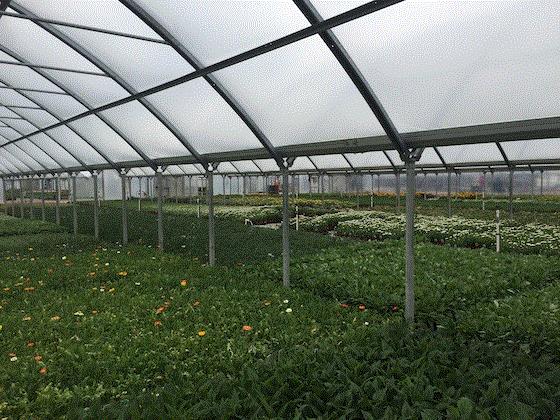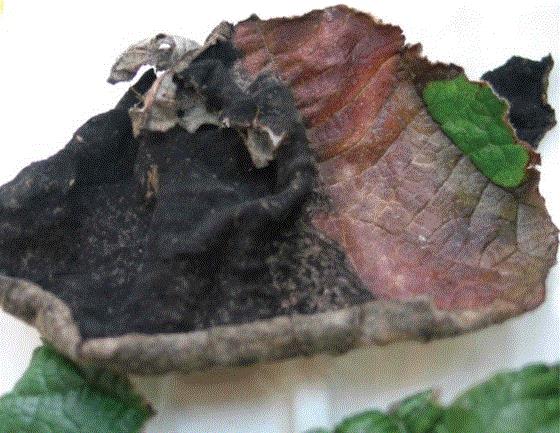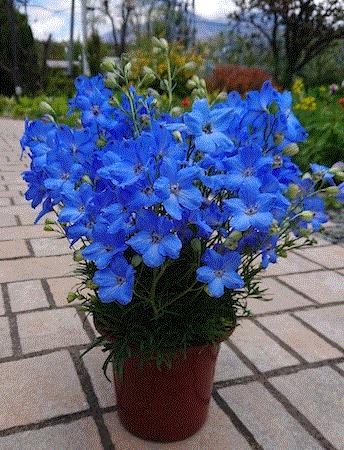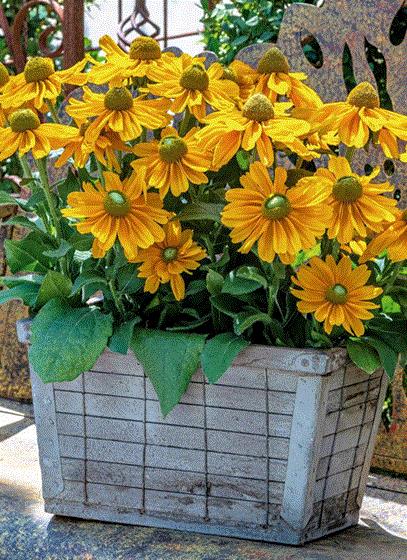Managing COVID-19 in the Greenhouse
I hope you, your family and friends are safe and doing well during this unprecedented time we’re living in. With the first day of spring behind us, it’s usually the time of year for greenhouses and nurseries to approach their peak seasons. With COVID-19 bringing many aspects of our daily lives to a standstill, it’s unclear how much the pandemic will affect spring sales.
I’m not even going to speculate what negative impacts there could possibly be, however, I do anticipate there will be some. With the current state of uncertainty, I’d approach this spring in a similar manner as I would during those cold, wet springs we experience all too often.
At the very least, I’m anticipating a slower start to the season than in normal years. This means there will be more apprehension from customers (large and small), shipping will be delayed, and you'll likely have to hold product in greenhouses longer than intended.
There are a few steps you can take to buy yourself some time and maintain plant quality.

The first suggestion I have would be to grow plants cooler. And the earlier you can make that decision, the more of a benefit it will have on the growth rate, the quality and your ability to keep them in the greenhouses for a longer time.
The second option may not be an option for many growers, but crop spacing has a great influence on the elongation, plant shape and final appearance. Plus, plants can be held longer at wider pot spacings.
I also recommend you use PGRs to help hold perennials in the production sites for longer durations. This is best done by applying them during the growth phases rather than once the crop is approaching a marketable size. I find it’s always best to apply PGRs using lower rates and making multiple applications during the growing cycle rather than using single higher rate application towards the end of the crop. Remember, too much growth regulation (stunting) isn't desirable; try to achieve moderate control of plant size without overdoing it.
Lastly, avoid over-fertilizing and growing plants too wet. When plants have more than what they need or can use, they'll often have softer growth, develop wider leaves and grow taller. All of these attributes aren't desirable if you think the plants will be on your production site longer than anticipated.

AmericanHort on Coronavirus
Not to inundate you with coronavirus information—I’m sure the news outlets and social media are likely overwhelming you with coronavirus topics 24-7. However, I doubt that they’re presenting the information from a green industry perspective. That’s where AmericanHort comes in.

First, I’d like to share AmericanHort’s Coronavirus Statement, where they share their COVID-19 pandemic viewpoints and keeps you abreast of the things they’re working on for the green industry.
Secondly, check out AmericanHort’s Coronavirus Resource Center, which will be constantly updated with relevant content and updates on the Federal relief efforts, H-2 visa processing and more.
More Coronavirus Resources
Like I said above and when I started assembling the newsletter, I didn’t intend to overwhelm you with coronavirus information. However, I want you to have resources at your fingertips as we face this worldwide challenge. Jen Zurko recently passed along some useful links the Florida Nursery, Growers and Landscape Association (FNGLA) compiled for its members. Check them out.
Reliable and Factual Coronavirus Resources for You

In the face of rapidly changing official guidance, often complicated by inaccurate information and unsubstantiated rumors, there are a number of reliable and factual resources available to all of us. FNGLA has taken the time to review many of them. Here are some of the very best ones the FNGLA has found:
-
CDC Comprehensive website—This is the Centers for Disease Control and Prevention’s comprehensive website, which serves as a jumping-off point for factual information, including a site dedicated to businesses and employers.
Click HERE to view these and other coronavirus resources on the FNGLA website.

Congrats to Dan Heims
The American Horticultural Society (AHS) recently named Dan Heims, president of Terra Nova Nurseries in Canby, Oregon, as the 2020 recipient of the AHS Luther Burbank Award. The Luther Burbank Award recognizes extraordinary achievement in the field of plant breeding.
Dan is a plantsman like few others and has become a major leader and influencer in ornamental plant breeding. He got his start in horticulture selling houseplants and then running a landscape design business before launching Terra Nova Nurseries out of his home in 1992.

Dan’s original life goal was to breed and introduce 801 plants to the industry. How close has he come to accomplishing this goal? Not only did Dan accomplish it, he exceeded it, and 30 years after his humble beginning, Dan has introduced over 1,000 new plants. And there’s no end in sight—he’s always traveling the world and looking for fun, exciting and outside-the-box ideas to apply his craft to.
Besides breeding, I’d like to point out a few ways Dan and Terra Nova have been leaders in our industry. The name Terra Nova literally means “new ground” and Terra Nova Nurseries has always strove to be innovative breeders and visionaries with their marketing, propagating and licensing efforts. Did you know that before digital media was ubiquitous, Terra Nova was the first company to provide CDs (compact discs for you younger readers) in their catalogs that contained color images and other helpful content? They continually use innovative themes and other fun strategies for promoting plants.
On Thursday, June 18, AHS will honor Dan and other award recipients during the Great American Gardeners Awards Ceremony and Banquet held at the Society’s River Farm headquarters in Alexandria, Virginia. Click HERE for full award descriptions and brief bios of the 2020 Award Winners.
I had the pleasure if interviewing Dan for the newsletter a couple years back. Click HERE to read my interview with the award-winning plant breeder.

Stop Botrytis with BotryStop
BotryStop from Bioworks Inc. is an organic biofungicide containing Ulocladium oudemansii strain U3. (Say that 10 times quickly!)
What is Ulocladium, you ask? It’s a naturally occurring non-pathogenic saprophytic fungus that's been shown to be highly effective at preventing botrytis infections on susceptible plants. BotryStop contains live spores that aggressively occupies the same physical space and outcompetes Botrytis on the dead and senescing plant tissue. This makes BotryStop a true antagonist and provides a management strategy that pathogens can’t develop resistance to.
 Ulocladium oudemansii (active in BotryStop) colonizing necrotic leaf tissue.
Ulocladium oudemansii (active in BotryStop) colonizing necrotic leaf tissue.
BotryStop is OMRI-listed and has a low four-hour REI. Some keys to success with BotryStop include:
- BotryStop contains live organisms and must be refrigerated upon receipt and between uses
- The best results are obtained preventatively or when disease pressure is low
- Maintain continuous agitation or mixing during the application
- It can be applied with non-ionic or compatible organosilicone surfactants; avoid using surfactants that claim to be penetrants, stomatal flooders or infiltrators.
- It can be tank mixed with many compatible products, including insecticides and fungicides; click HERE for a compatibility listing
- Apply with a fine droplet spray using enough spray volume to wet the foliage, but not to the point of runoff; complete coverage and wetting of susceptible plant surfaces is required
- Although it’s an aggressive organism that outcompetes Botrytis, BotryStop will NOT colonize on living tissues
- Ulocladium will actively grow at temperatures between 64 and 77F (18 to 25C); it grows most rapidly when the temperatures are between 64 and 68F (18 to 20C)
- Avoid allowing the spray mixture to stand for prolonged periods of overnight
BotryStop is labeled for application to a wide variety of field greenhouse and tunnel-grown trees, vegetable fruits and ornamentals (both in greenhouses and nurseries). Click HERE to learn more about BotryStop.

Gold-Medal Perennials
Fleuroselect recently announced their 2021 Gold Medal winners and two of the three winners were new perennial cultivars! Winners are awarded to plants that are breeding breakthroughs and received outstanding scores on innovation, beauty and garden performance.
Delphinium grandiflorum Cheer Blue

Did you know that Delphinium grandiflorum are popular cut flowers in Japan? Cheer Blue from Miyoshi is a dwarf F1 hybrid version of this popular perennial. With its clear blue, upward-facing flowers without spurs, Cheer Blue is an eye-catcher. The huge, bright flowers are striking and the plants grow with lots of vigor and uniformity. This is a great choice for containers or perennial borders.
Rudbeckia hirta Amarillo Gold

Rudbeckia hirta cultivars may not be perennials in all locations, but they certainly provide a burst of color whether regardless of how they’re marketed or utilized. With its golden-yellow flower petals, Benary’s Rudbeckia Amarillo Gold delivers lots of flower power. Amarillo Gold produces an abundance of attractive flowers on short, sturdy stems.




Thanks for reading this edition of Perennial Pulse.
My email is ppilon@ballpublishing.com if you have any comments or suggestions.
Take care,
Paul Pilon
Editor-at-Large
Perennial Pulse
This email was received by you and 30,362 other fine subscribers!
If you're interested in advertising in Perennial Pulse, contact Kim Brown ASAP and she'll hook you up.